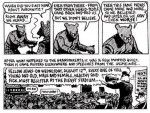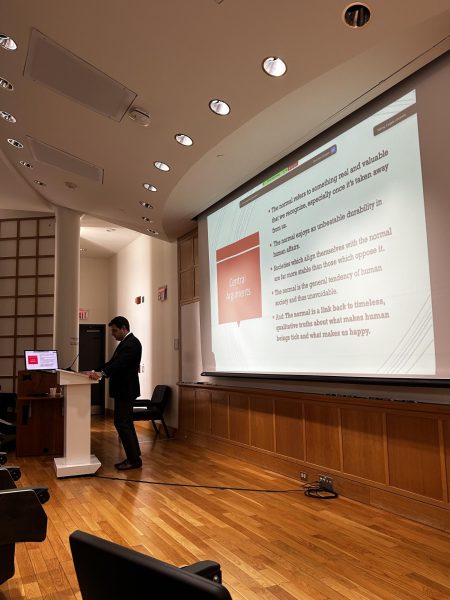Students Send Maus South

In a joint effort, Derek Hinckley ’09, senior Greg Bricca and sophomore Kelly Cattano, have brought lessons about the Holocaust all the way from their Challenge of Modernity classes in Hamilton, NY to impoverished junior high classrooms in the Deep South. The group is collecting Colgate students’ copies of Art Spiegelman’s 1986 graphic novel Maus: A Survivor’s Tale to send to Hinckley’s class of seventh and eighth graders in Greenwood, Mississippi.
Hinckley, who is working with Teach for America, an organization that enlists college graduates to teach children in low-income communities across the country, discovered that his seventh and eighth grade students had virtually no knowledge of the Holocaust. In response, he worked to organize a book drive here at Colgate in order to enlighten his ill-informed students on perhaps one of the most significant events in modern human history.
Works like Night by Elie Wiesel and Anne Frank: The Diary of a Young Girl promote a greater human understanding of the Holocaust, but for many of the country’s undereducated students, including those found in classrooms like Hinckley’s, these books would not be feasible teaching tools. While Maus is a work read by college-level students, the fact that it is a graphic novel makes it an effective teaching tool for children as well.
“The Holocaust is too heavy of a subject to merely describe in words,” Cattano said. “In order to fully digest the severity of this terrifying historic event, I believe visual interpretations in addition to powerful texts is the best approach. Maus is a great tool to educate students of all ages and levels of intelligence.”
Images have long been considered a powerful form of expression. This holds true when communicating the severity of such horrific events as the Holocaust. Movies like Schindler’s List and visual exhibitions at Holocaust museums around the world have helped enlighten generations about the Holocaust for some time, and Maus is an integral part of that tradition.
Winner of the 1992 Pulitzer Prize, Maus is a two-part graphic novel that tells the life stories of Spiegelman and his father Vladek in cartoon form. The Jewish characters are depicted as mice while the Nazi characters are, understandably, cats. Maus has been praised for its powerful message, which is relayed through an unconventional medium. In a Newsweek review of the book, Maus is described as a work that “compels us to bear witness in a different way: the very artificiality of its surface makes it possible to imagine the reality beneath.”
Colgate includes Maus in its curriculum through select Challenge of Modernity classes and remembers the Holocaust annually by inviting Dr. Helen Sperling, a local Holocaust survivor, to speak. Now Colgate students are extending their Holocaust remembrance far beyond campus.
“I had no idea this simple idea from a casual lunch would take off so much, but I am certainly thrilled about the outcome,” Cattano said. “We collected enough books to have each student in his classroom possess their own Maus book.”
However, there are still many more classrooms in need. To get involved, Challenge of Modernity students can bypass the bookstore at the end of the spring semester and instead donate their copies of Maus to the book drive. Cattano also encourages students to reach out to family members at home to help out with the effort.




